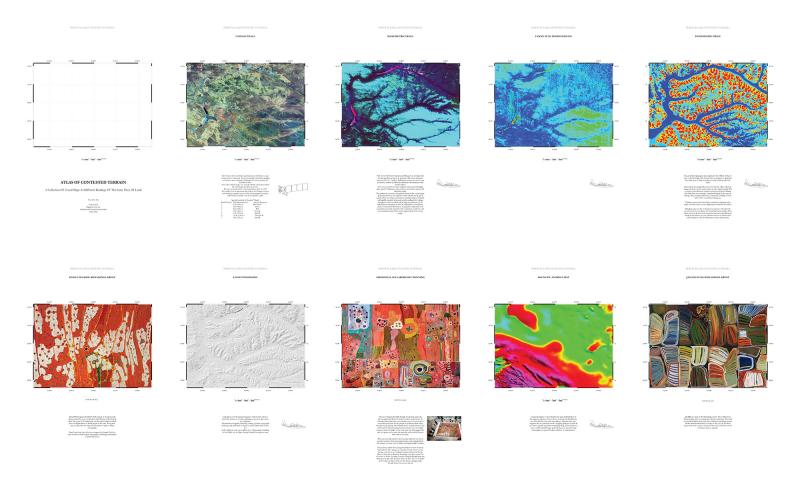
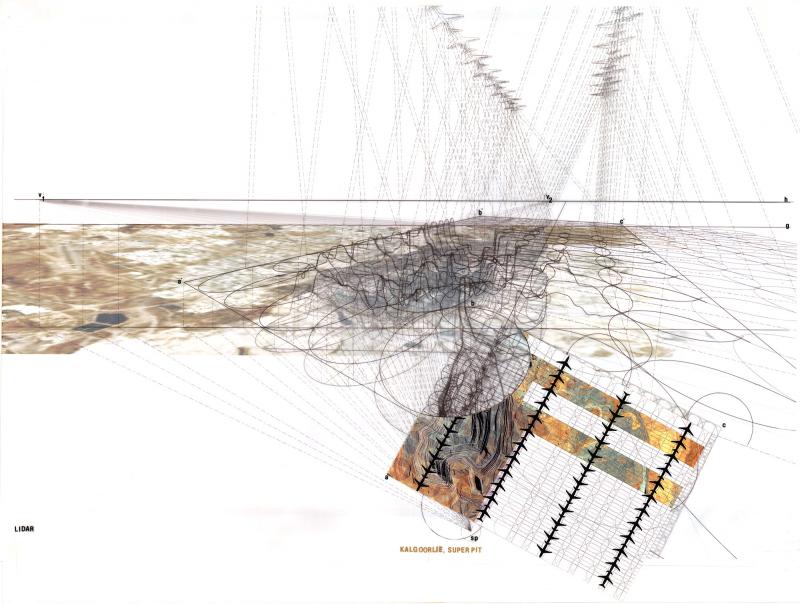
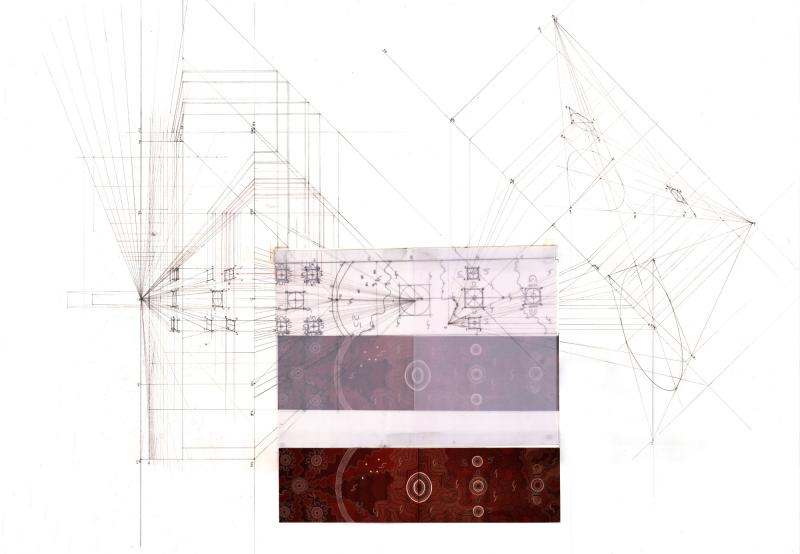
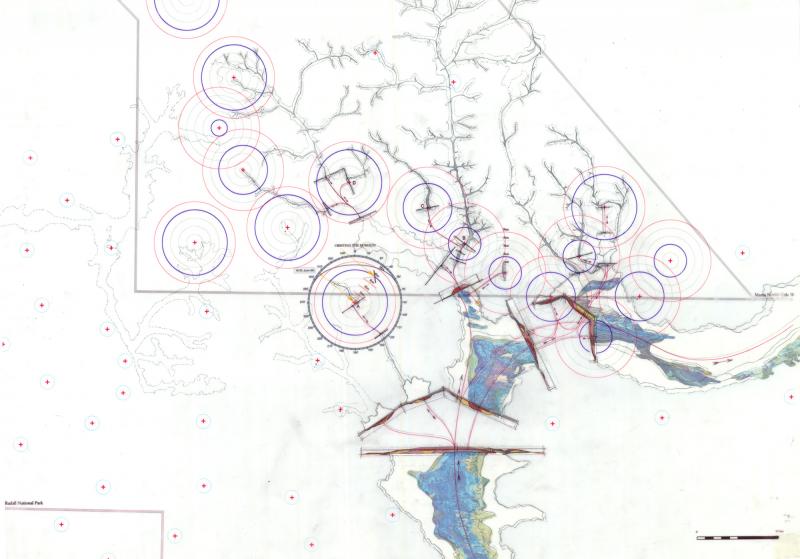
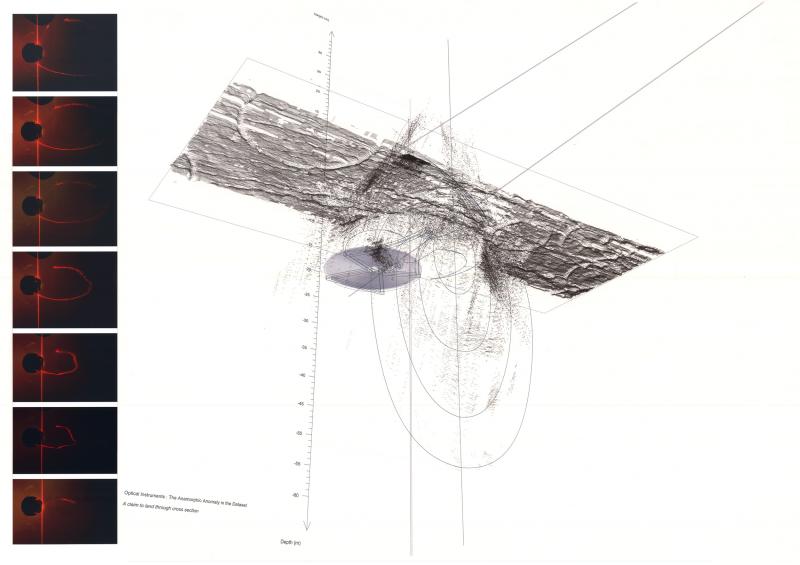
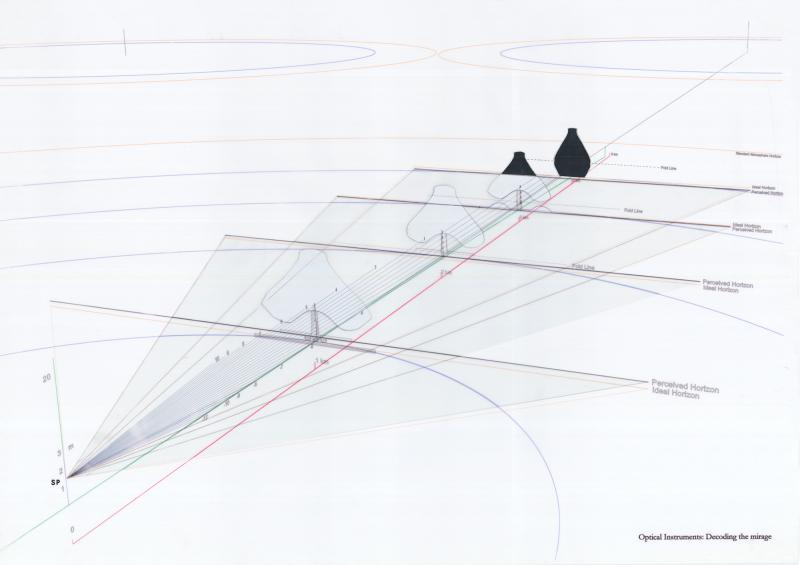
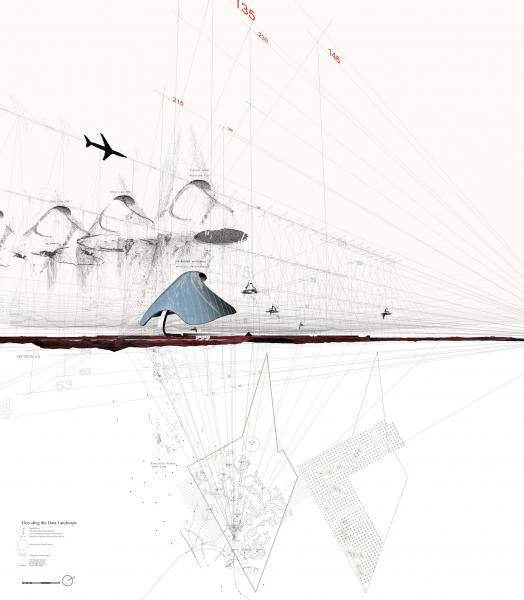
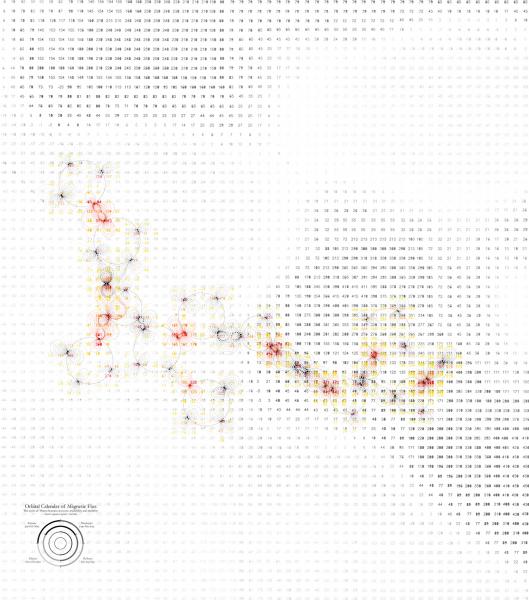
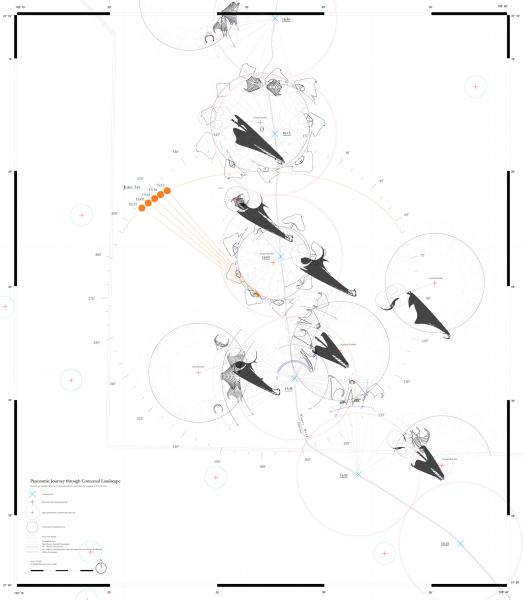
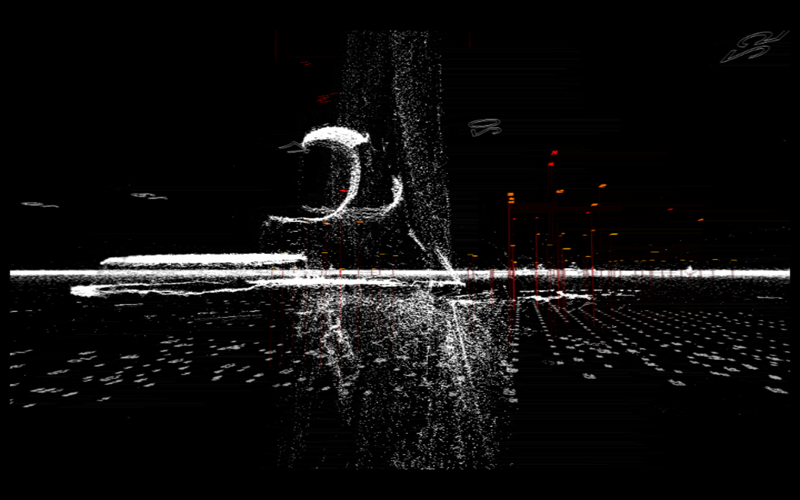
Sacred Anomalies: Infiltrating Landscape Surveys
The vast territories of the Australian outback are highly contested landscapes. The technologies with which this ground is surveyed and recorded also become the political means through which groups claim ownership over it. My proposal explores the space of the survey as a parallel site for intervention, and seeks to question the role of the architect in a contested landscape where value is assigned through its virtual construction. Within the mining survey data, exist a seasonal network of mysterious dreamtime anomalies. Anchored around aboriginal sacred sites these mythic objects slowly stalk the contested territory, distorting mining cartographies to generate a new form of landscape representation. This architecture of mirages exists at the threshold between the sky and the subterranean, between the physical and the virtual, to generate a ghostly constellation of sacred sites hidden within the dataset.